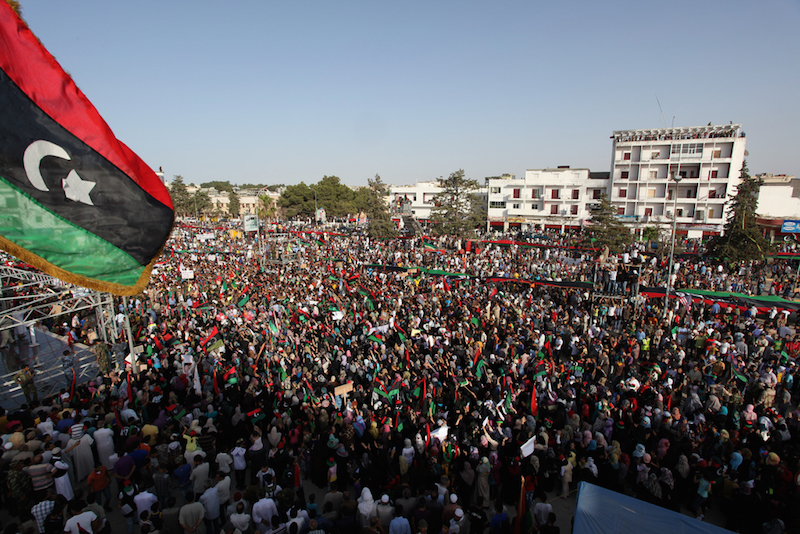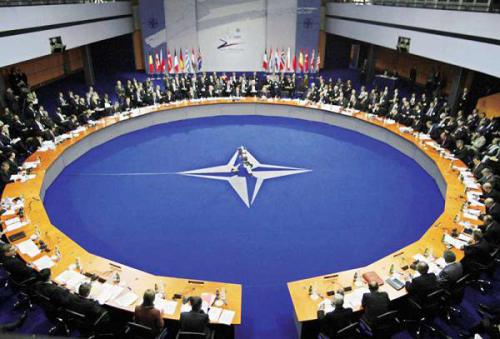After the Western intervention and the toppling of Muammar Gaddafi in 2011, Libya has slowly swirled into lawlessness, providing unprecedented opportunities for migrants and traders throughout the Sahel. The collapse of Libya as a state means an unprecedented shift of power to the south, giving rise to unlikely alliances between nomads and terrorists, and emboldening a thriving illegal trade. As the country itself split into rivaling entities, regional dynamics are pushing towards the emergence of new routes across the Sahara desert, creating a network of alliances and rivalries that is changing the Sahel region.
Three networks, all closely intertwined, have emerged out of the Libyan conflict: trade, smuggling and militant routes. This article examines how they overlap.
Trade Routes
Libya proved to be a fertile ground for the Islamic State (ISIS) after the emergence of two competing separate governments: the internationally recognized government of Libya, based in Tobruk, and the General National Congress, based in Tripoli. In reality, the division of power is much more subtle, with dozens of militias defending their own smaller city-state, constantly forging alliances that span tribal, ethnic, religious and military lines. At the core of it all, of course, is business.
The Sahara’s vast expanse has been a vital economic crossroad from even before the Roman Empire, culminating in a prosperous trade in the 15th century, before slowly falling under the imposition of arbitrary colonial lines. The removal of Gaddafi, a keen ethnic divider, helped restore it. A new flourishing trade of goods smuggled North and South, has brought militants, migrants and water up North, while bringing cheap petrol to Niger and Chad.
In 2015, the International Business Time noted:
“The scale of the illicit network trading people, drugs, weapons and fuel is so vast and so lucrative that it encompasses all factions and groups in Libya’s divisive civil war”. The Fezzan region is at the core of this booming lawlessness, Sabha, the capital of this province, has become a lawless transport hub, with stakes high enough to cause infighting between Tuaregs and Tebu, as in the 2015 clashes which led to 40 killed in the city. According to an activist who spoke to the IBT, the Tebu smuggle both migrants and drugs, as most smugglers do.”
“The smuggling networks are intertwined and their common ground is economic. It is all about making money. That’s what it is all about for these groups,” says Mohamed Eljarh, non-resident fellow at the U.S Atlantic Council’s Rafik Hariri Center for the Middle East. Al-Qaeda in the Islamic Maghreb (AQIM) and Al-Mourabitoun (The Sentinels) have taken to intermarrying with the Tuaregs and Berabiche tribe in a symbiotic enterprise that has allowed them to facilitate trade in cocaine, cannabis and tobacco.
Militant routes
As the two Libyan governments have been unable to curb the rising radical Islamism, it is no wonder that Libya attracted the Islamic State. But other Salafist organizations such as Ansar al sham also benefit from the overall lawlessness of the country. As a result, experts consider the country an ideal training ground for Salafists, preparing for attacks in Egypt and Tunisia, as well as in Western Europe.
Broader regional problems also explain the flow of militants who joined Libya’s numerous militias. According to the Geopolitical Monitor, “high unemployment in Algeria, a two-front fight against extremism in Niger and many disaffected youth in Tunisia and Egypt account heavily in the country’s inflow of foreign fighters.”
Southern Libya, over which neither of the two de facto governments hold power, has effectively become a no-man’s land, with local tribes taking an active role in the jihadist agenda. In 2014, Nigerian Interior Minister Massoudou Hassoumi referred to southern Libya as “an incubator for terrorist groups.” According to Critical Threats, ISIS uses the same established smuggling routes for bringing its own new recruits.
The Tuareg and Tebu tribes, alternatively exploited and marginalized by Gaddafi, found empowerment in the collapse of his regime by filling the power vacuum in Southern Libya, resulting in tactical alliances with various smuggling groups. Further south, the Libyan spillover has emboldened local regionalist groups, many of which pleaded allegiance to ISIS, including Boko Haram.
Migration routes
Libya’s lawlessness and chaos are often mentioned to describe its transformation into a migration hub for Europe. 87% of the 900,000 migrants entered Europe through Greece last year, but this year’s deal between the EU and Turkey disrupted that route, making Libya a promising alternative.
Libya’s prosperous smuggling business has become so successful that fishermen are now complaining they can’t find any boats to fish, leading to a dramatic price hike. However, getting on the boat is the easy part. It is merely the second phase of a long, dangerous journey through the Sahara desert. In 2013, the largest portion of refugees smuggled out of Libya were Syrians, but other migrants from Sudan, Chad and Niger have joined the stream, all of which has been facilitated by Libya’s porous borders.
The Niger route is the most widely used for West Africans. The Tebu, an ethnic group living in northern Chad and Northeastern Niger, control most of the Libyan south border, and levy a tax for every person smuggled North. Migrants are then often dropped in the Fezzan region, where those who can afford it try to make it to the port. Libyan officials are virtually powerless to stop the flow.
“All the smugglers are connected and they pass the migrants on between each other,” said Ibrahim Shawish, the mayor of Murzuq, a small town 350 km south of Libya’s border. Smugglers also work closely with Libya’s different factions, and Libya’s de facto two governments don’t have enough power to intervene. The two rival administrations do not extend to the largely tribal south, and the result is the presence of actual anarchy.
Conclusion
What has emerged is a fluid movement in the Sahel region, of intimate interconnection between historical regional aspirations from marginalised tribes, terrorism and criminal networks.
Al-Qaeda was quick to get in bed with regional factions to access the lucrative drug trade. Human smugglers, from the southern Sahel region all the way to the ports of the Libyan coast, are embedded with local factions at every stage of the journey, and often trade for oil on the same trip.
Photo: “Demonstration in Bayda” (2011), via Wikimedia Commons. Public Domain.
Disclaimer: Any views or opinions expressed in articles are solely those of the authors and do not necessarily represent the views of the NATO Association of Canada.




